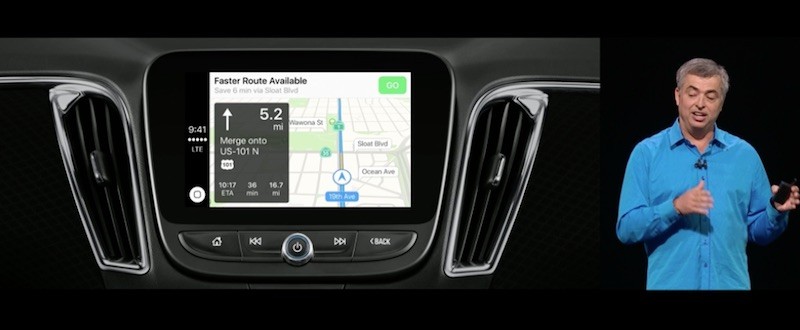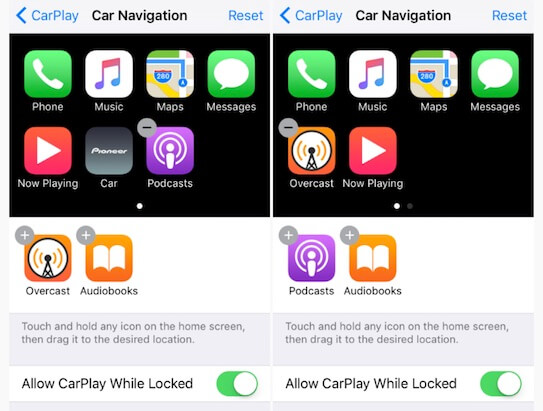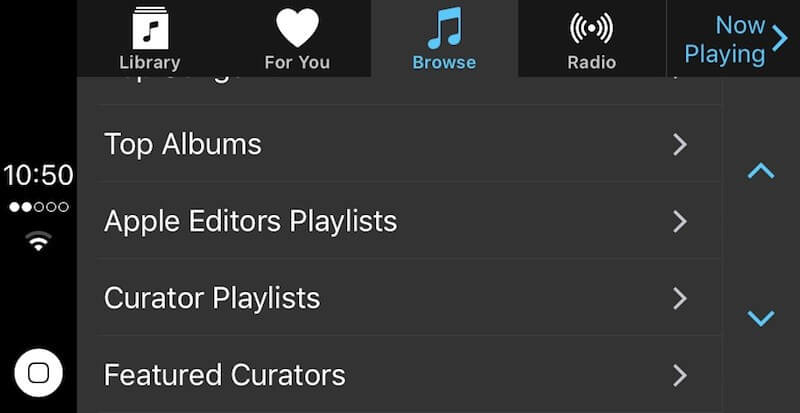While most of the WWDC 2016 keynote were focused on iOS 10, macOS Sierra, and new versions of tvOS and watchOS. On day 2nd of WWDC 2016, Apple showcased many products, services and revealed some facts n figures, but the highlights of the day were Hide Apps, Apple Music Makeover and also a number of CarPlay-related announcements like Alternate Routing and more.
[section_tc][column_tc span=’12’][youtube_tc id=’https://www.youtube.com/watch?v=X3qGa6-O0TM’][/youtube_tc][/column_tc][/section_tc]
Few Highlights of the Day:
Car-Play:
CarPlay were most focused and highlight of the day second, where the company described the changes and the new features of Car-Play.
First, the new Apple Maps appearance on iOS 10 and some new features extend to the dashboard was in keynotes. Later the If there is a lot of traffic ahead, for example, CarPlay will now proactively provide you with alternate routes and estimate how much time you saved compared to your original route. 
Additionally, CarPlay turn-by-turn directions will now be available directly in your instrument cluster in vehicles equipped with a driver-side peripheral screen for a safer driving experience.
Another feature that should make CarPlay safer is the Siri SDK. Apple is opening Siri up to developers, enabling third-party apps for VoIP calling and more to work seamlessly with the virtual assistant, and the functionality extends to CarPlay.
Hide App Feature:
CarPlay apps and other apps can now be rearranged or hidden on iOS 10 by tapping on Settings > General > CarPlay > Your Vehicle. Simply tap the add or subtract button on the stock or third-party apps that you want to add or remove. Phone, Music, Maps, Messages, Car, and Now Playing cannot be removed.
Apple Music:
Just like on iOS 10, Apple Music has received a makeover on CarPlay that makes it easier to browse and discover music. The top menu options have changed from For You, New, Radio, Playlists, My Music, and Now Playing to Library, For You, Browse, Radio, and Now Playing. Curated playlists have also been added.
CarPlay is also now supported on ultra-wide screens. The new features and improvements will require pairing an iPhone 5 or later on iOS 10. 
Many automakers in the U.S. and abroad now support CarPlay, including Acura, Audi, BMW, Buick, Cadillac, Chevrolet, Ferrari, Ford, GMC, Honda, Hyundai, Kia, Lamborghini, Lincoln, Mercedes-Benz, Mitsubishi, Nissan, Opel, Porsche, Peugeot, Seat, Škoda, Subaru, Suzuki, Volkswagen, Volvo, and others.
The WWDC 2016 Day 2nd remained successful with their highlight announcements and was able to engage people at large level.
The Quick Recap of other announcements of the day 2:
- Ability to delete Apple’s pre-installed apps, in particular Stocks .
- Apple released their picks for the year’s best-designed apps. Be with Mantra Labs for a more in-depth report on these apps from Apptopia in the coming days.
- Everyone’s in love with the world’s youngest WWDC attendee, nine-year-old Anvitha Vijay.
- Rumours of Apple developing iMessages for Android were completely unfounded.
- Complete list of apps Apple opened to outside developers was revealed.
- The App Store now has 2 million apps downloaded over 130 billion times.
- Apple has won the “smart home.”
- Games Center appears to be removed from iOS.
- Some felt there was a conspicuous lack of information about the iPad.
- Handwritten messages might be kind of cool, though.
Finally, day two brought the numerous developer sessions. The 3rd day expectations are also high. For updates of 3rd day stay with Mantra Labs.
If any queries approach us on hello@mantralabsglobal.com
Knowledge thats worth delivered in your inbox




